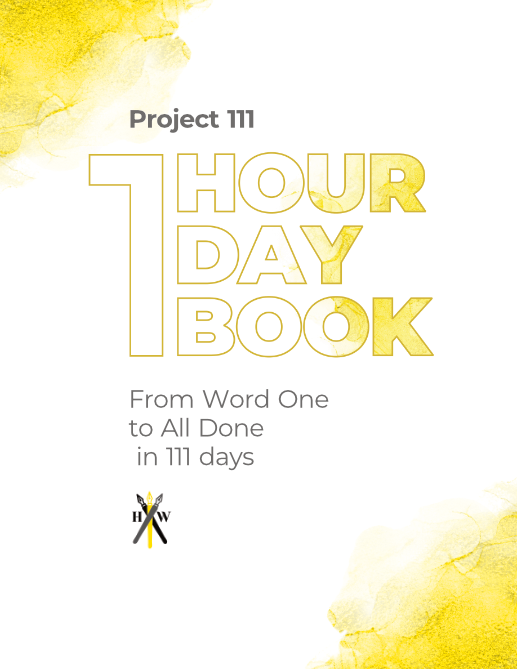Best-selling author Brandon Sanderson is well-acquainted with magic – all of his stories include magic in one way or another. Sanderson has learned a lot about what works and what doesn’t when it comes to supernatural powers. His career has been built on high fantasy stories and science fiction stories. Creating sprawling series with interesting world-building and magic is kind of his thing.
Brandon Sanderson has created what he has coined Sanderson’s Laws of Magic, echoing Asimov’s Laws of Robotics. These three laws and the zeroth law can help a writer develop a compelling magic system for their novel. Let’s explore each of them and break down their meaning and how that applies to your book.

Sanderson’s First Law
An author’s ability to solve conflict with magic is directly proportional to how well the reader understands said magic.
This law deals with magic and conflict and how to manage the interaction between the two. A story can exist without characters, but conflict is the key to storytelling. If there is no conflict, then there isn’t a story. If your short story, novel, graphic novel, fan fiction, or RPG campaign has magic, it will likely be intertwined with conflict.
The central focus of this law hinges not on the magic or the conflict, but on the reader’s understanding. Take for example The Martian by Andy Weir. An awesome, hard science fiction story that leans heavily into what is theoretically possible for an astronaut to do. What makes it so compelling is that it remains mostly within what is plausible in real life.
This law’s application changes a bit depending on whether your magic is a hard magic system or a soft magic system. For example, in the Mistborn series by Brandon Sanderson himself, there are various magic users with various powers. In the first book, The Final Empire, different types of magic are laid out for the reader and it is explained which member of the crew has which ability.
This directly affects conflict resolution because only certain characters can solve certain problems. And the way that they all come together to problem solve is very close to the fun dynamic of Ocean’s Eleven. When a specific character uses their specific power to solve a specific problem, it’s a satisfying resolution! Likewise, the tension ramps up when the person needed isn’t present and the team has to find a workaround. Throughout the Mistborn trilogy and subsequent stories in that world, the magic is always explained but still surprises you with the intricate applications.
Compare this to Harry Potter. The big conflict surrounds Voldemort. But what is his plan? What can he do? It’s unclear exactly what he is capable of for large portions of the story, but the books take special note to mention again and again that he is an extremely powerful wizard.

This amplifies the tension and provides conflict, but not because the readers understand the magic 100%. The relatively unknown bounds of the magic add to the fear and anticipation surrounding Voldemort. There are no clear boundaries on what can be done with magic, so Voldemort is a powerful wizard, and a baddie to boot, which adds to the wonder, mystery, and drama of the story.
All of that to say, if a conflict is going to be resolved by magic, make sure that it is believable in the context of your story before that resolution takes place.
First Law Applied
When writing your own story, be sure to take note of how well the reader understands the magic at a given moment. If they say something felt like deus ex machina, then they probably were missing some key information. When a conflict is resolved, be sure that as you run your writing past alpha and beta readers that you ask how they feel about the resolution. Try to find things that they may need to know, or don’t need to know, and how satisfying the ending was. Consider that resolutions often feel satisfying thanks to the characters’ wit and cunning, not the mere existence of the magic.
Sanderson’s Second Law
Weaknesses, limits, and costs are more interesting than powers.
Exploring this second law is fairly easy to understand but perhaps more nuanced than the first in the application. As stated, your focus as a writer should be on the “weaknesses, limitations, and costs” that play into the magic system. The abilities are often where we start when it comes to magic. Creating abilities is fun and flashy. Imagining all of the amazing things that people can do in your world is just a fun thing to think about. Who hasn’t fantasized about flying to work or using the force to grab the remote?
But in terms of crafting an interesting plot for your creative writing endeavors, limits are far more useful and far more interesting. The reason that we fantasize about magical powers is often to solve our own limitations. Getting up off the couch is too much effort and driving in traffic inspires dreams of zooming through the sky. But the opposite is true for adding magic into an interesting plot in a satisfying way. The limitations of the magic birth conflict and therefore creates stories.

It’s a good rule of thumb that if you really want to develop an awesome plot, it’s going to require a lot of effort on the part of your characters. Avengers Endgame wouldn’t be as satisfying without the deep failure of Avengers Infinity War. By exposing the weakness of the Avengers–that weakness being that they were not assembled–the conflict of the story grew immensely and the resolution so much sweeter.
It is also useful to consider the differences between weaknesses, limits, and costs.
A weakness is something that diminishes the power of the magic or magic-user. The classic example is Superman and kryptonite. But it can also be that a villain’s magic is diminished when used on the hero. Or even a character’s strongest powers also leave them the most exposed. (Avatar Aang is most powerful and vulnerable in the avatar state.)
Limits are where the magic ends. This is different than a weakness in that the power isn’t actively being diminished, though the two may be related. This is simply what can and can’t be done. A Jedi mind trick only works on the weak-minded. Strong-minded individuals can’t be fooled that way.
Costs are what is spent to make the magic work. We’ve got a whole article about the different bases of a magic system and the ways to apply them, but we will explore just a couple here. If time and study are needed to make the magic work, then that is a cost. If potions, emotions, focus, or sanity is spent to use the magic, then that is the cost.

These three components work in tandem with each other. And not every good magic system was made by considering these, but they can help you connect your magic with a meaningful conflict.
Second Law Applied
Limiting your magic’s abilities is more interesting because it adds new levels of complications for your characters. If your hero can only fly on Saturdays but has super strength every other day, now they have to figure out how to balance that time. If they have to eat dirt to gain their powers, that causes some interesting problems for their digestive system. If they are weak to people who are afraid of them, then they would need to make some very interesting decisions on how to approach people around them.

Our 84-page book planner and 111 day writing course.
Sanderson’s Third Law
The author should expand on what is already a part of the magic system before something entirely new is added, as this may otherwise entirely change how the magic system fits into the fictional world.
When worldbuilding, it can be dangerous to think that expansion is better. That rather than one magic system, this story will have fifty! But you have to take into account that a magic system is a tool. If you have fifty hammers, how many can you actually use to hit a nail? Probably only one, maybe two if you’re particularly talented. If you can juggle three hammers and hit a nail with each of them, you should look into getting a show in Vegas.

Rather than collecting magic systems, rules, or abilities, focus on what tool you need for your job. Think about what you already have got before adding something new. Often the best applications of magic are found by shrinking your scope, rather than expanding it. When you examine what you already have and how it might affect the world or your characters in new ways, that can lead to some really interesting problems. For example, in the first season of The Legend of Korra, there is a lot of tension between benders (people with immense power over the elements) and non-benders. While this amazing idea is a bit squandered by the show, there are still tons of awesome applications for it.
For example, law enforcement in The Legend of Korra has to be comprised of benders out of necessity. They need to match the power of any threat. But that could mean that power gets abused in other ways when dealing with normal people. If a bender is imprisoned, what measures are taken so they cannot escape? What can be done in terms of court rulings to restrict the use of bending? How do grounds for litigation change? Do laws apply differently to those without powers?
These interesting questions sprout from what already existed in the Avatar: the Last Airbender series. The best ideas stem from the context that we already understand rather than the previously unseen expansions of power that are introduced in this new series.
Consider The Martian. We get a jolt of excitement when Mark Watney discovers a new solution because it fits with our understanding of the rules in his world. The Martian doesn’t have magic in the traditional sense (other than mad botany skills) but the point is, what Mark Watney does feels believable. That believability depends on the reader’s understanding of the world the story takes place in. The solutions are satisfying because they “fit in” with the scientific laws he is bound by. Imagine how it would have felt if Watney simply discovered he could breathe martian air all along. We, as the readers, would feel cheated.

Third Law Applied
Whether you’re writing a sprawling epic like the Stormlight Archive or a short fantasy story, dive deeper into your magic rather than expanding out. Discover new facets of the magic in different contexts as you continue to build your story. This is not to say that you should never expand your magic system, but rather increase magnification on what you already have first, then see what interesting ideas spring from that.
Sanderson’s Zeroth Law
Always err on the side of what’s awesome.
Of all of Brandon Sanderson’s laws, this one might be the most important. Follow the rule of cool. Whatever has you excited about your own magic is often what will land best with your readers. Just listen to authors talk about the magic in their stories and its clear – they follow what they loved about it.
For more resources, check out these 7 steps to building an amazing magic system. To listen to Brandon Sanderson and fellow writers discuss this topic, check out Writing Excuses.
Reed Smith
Reed is the founder and builder of Habit Writing and enjoys all things writing. He loves learning about the craft of storytelling, writing messy drafts, and playing board games with his wife, friends, and family.
Our 84-page book planner and 111 day writing course.
